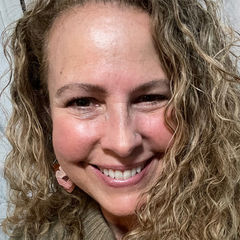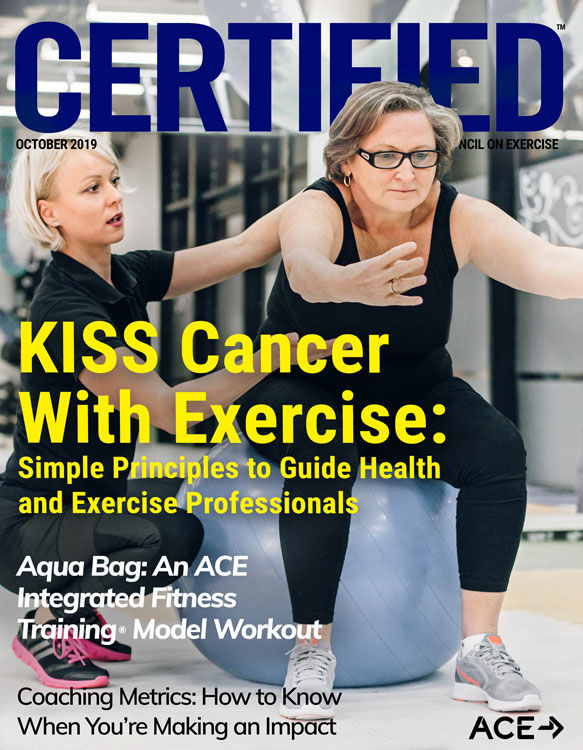
Have you ever wondered about the difference between a consultant and a coach? The distinctions may seem subtle, but it is important to make sure that, as a health coach, you are providing the type of guidance your clients need to achieve their health and wellness goals. Let’s take a closer look at what separates a coach from a consultant.
Where’s Your Focus?
Jenny Souto, BSN, a certified health coach from Long Island, N.Y., feels that the primary difference between coaching and consulting lies in each one’s focus: Whereas coaching focuses more on the client, consulting typically focuses more on the problem. “The coach helps clients uncover their own innate knowledge through asking a series of questions, helping them uncover their own answers. The consultant is the expert to fix the problem. The difference between the two is the focus.” In other words, while a coach guides a client toward finding his or her own answers, a consultant fixes a problem by drawing upon his or her own personal knowledge to provide answers.
“Coaching is a partnership that requires ongoing empowerment from the coach to the client through providing knowledge and tools for them to develop the necessary skills or strategies to succeed in the pursuit of their goals,” adds fitness entrepreneur Bertus Albertse. “A coach guides clients through a process or journey, helping the clients find an answer or solution from within.”
Lee Jordan, MS, an ACE Certified Health Coach and Behavior Change Specialist, emphasizes that while a health coach brings specific expertise to a situation, just as a consultant does, the difference lies in the coach’s client-centered approach, which cultivates autonomy and self-efficacy. “The coach recognizes the client as the expert, as [the clients] are experts on themselves,” he explains. “This ‘coach approach’ shows up when we look at how a coach versus a consultant works through an area of concern presented by the client.”
As an example, Jordan considers a client who wants to lose weight. “A consultant would typically start off by gathering quantifiable information regarding the client’s current position and desired outcome weight. [They would then] help the client ensure he or she is setting a feasible outcome goal and then gather more data from the client regarding current physical activity and nutrient intake. The consultant would then assess the data and provide an evidence-based path to achieve the client’s outcome goal in an efficient and effective manner. The plan,” explains Jordan, “once presented to the client and agreed upon, is often supplemented with some education, to teach the client about the key determinants of nutrition and exercise. This prescribed path is then turned into SMART goals that will be agreed upon by the client and action will begin.”
In the same scenario, Jordan says that as a coach, he begins by acknowledging that the client is the expert on his or her own life. He views their relationship as a partnership in which he can support the client in shaping a plan forward. “The coach will spend time facilitating client self-discovery around the desire to lose weight using varied methods, including a motivational interviewing technique such as OARS [open-ended questions, affirmations, reflective listening and summarizing],” Jordan explains. “The coach is focused on facilitating the client’s autonomy and self-efficacy and understanding the necessity of both for sustainable change to occur. The coach avoids stepping in with the ‘answers’ and is less interested in the designing of a path that achieves an outcome efficiently and more interested in a path that is designed in a client-led fashion and centered on an outcome that is sustainable.” (Note: More information on OARS and other motivational interviewing techniques are presented later in this article.)
This type of open and compassionate conversation is what sets coaching apart from consulting, agrees Robyn Morrison, a certified health coach from Vermont. Morrison adds that in this type of weight-loss scenario, “The client isn’t rushed and great details would be given about his or her current behavior, patterns and limiting beliefs. These are vital when it comes to success, because we can [lose weight] and still have unhealthy behavior patterns, or limiting beliefs, which will likely mean any success a client has won’t last long.”
Hone Your Coaching Skills
You may be more experienced at handing out advice than you are skilled at drawing out the answers from your clients. After all, as health and exercise professionals, that is what most of us were taught to do. Asking more questions, listening more and allowing the client to be the expert takes practice, but it’s worth it if it means your clients will experience success at a deeper, lasting level.
One process that health coaches use to help move clients forward is motivational interviewing, which has been defined as "…a collaborative, person-centered form of guiding to elicit and strengthen motivation for change.” It involves collaboration (rather than confrontation), evocation (rather than imposing your own ideas) and autonomy (rather than inserting your authority).
There are several mnemonics that can help keep you on the right track when using this approach with clients: DARN-CAT, RULE, PACE, and OARS (Miller and Rollnick, 2013).
DARN-CAT is used to elicit change talk, which is a type of speech your client may use, depending on the stage of change he or she is in. When moving through the stages of change, the type of language used will change. As a health coach, you want to listen for clues in your client’s language and help elicit forward movement in both language and behavior (Miller and Rollnick, 2013). For example:
Preparatory Change Talk
Desire: “I want to change.”
Ability: “I can change.”
Reason: “The reasons I want to change are...”
Need: “I know I need to make this change.”
Implementing/Action Change Talk
Commitment: “I will make this change!”
Activation: “I am prepared to make this change.”
Taking steps: “I am taking specific actions to make this change.”
RULE will help you remember the core principles of motivational interviewing (Miller and Rollnick, 2013). First, resist the righting reflex. In other words, resist the temptation to tell your client what you think he or she should be doing. Understand where your client is coming from and what his or her motivations to change are by asking curious questions. Listen to what your client is saying and stay in the moment. And lastly, empower your client so that he or she feels in control of his or her decisions and actions.
PACE is the type of mindset you, as the health coach, want to maintain during coaching sessions (Miller and Rollnick, 2013). Remember that the client–coach relationship is a partnership, not a dictatorship. While it's O.K. to suggest various paths your client could take to reach his or her desired results, it is not your responsibility to choose what path you think is best. Avoid allowing your values to enter into the equation; instead, your client’s values are what should be considered. An attitude of acceptance will help your client feel emotionally safe and unashamed of his or her choices, as there is no right or wrong decision. Be compassionate toward your client’s struggles. Avoid using phrases that imply the client is just using excuses for not making change, as it implies judgement. Remember, change is scary for many people and there are many variables and unknowns associated with change. Try to make your coaching conversations evocative, as your client’s memories and past experiences can evoke associated strong feelings and emotions, which in turn can help spur change.
The acronym OARS, a technique utilized by Jordan, can be used to remember the core skills used in motivational interviewing (Miller and Rollnick, 2013).
Asking open-ended questions will help draw out more thoughtful responses from your client. Open-ended questions require more than a simple yes or no response. While there will be times where closed-ended questions are appropriate, your primary questions should be open-ended. Avoid using the word “why” when asking questions. While it is an open-ended question, it can also trigger more of a defensive response. Instead, start your question with something like, “What about that…” (Miller and Rollnick, 2012).
Affirm your client by providing positive comments about her strengths, intentions and efforts. Affirmations will help build rapport between you and your client. Celebrate any forward movement, even if the client didn't fully meet a goal. And make sure your affirmations are genuine and authentic. Clients will know when you're spouting empty flattery.
Reflect back to your client what she said to confirm that what she said and what you think she said are one and the same. We all interpret things based off our own understanding and experiences. Reflective listening will help you both gain clarity, which is one of the primary goals of coaching.
Summarizing is a type of reflection where you recap what was said during certain parts of a conversation, tying all the pieces together. Summarizing is often useful at the conclusion of a conversation but may also take place throughout a conversation as necessary.
Which Path Will YOU Take?
Finally, it’s worth noting that, in a research setting, motivational interviewing techniques, which are a hallmark of coaching, have been shown to be more effective than traditional advice giving when it comes to addressing a broad range of behaviors and diseases. A meta-analysis of 72 studies, for example, found that when using motivational interviewing in brief encounters of 15 minutes, 64% of the studies reviewed showed a positive effect on the client. Additionally, using this technique with clients more than once was shown to increase its effectiveness (Rubak et al., 2005).
Now that you’ve gained some clarity on the differences between coaching and consulting, which have you been practicing? Which one do you want to be practicing?
If you’re ready to dive into the coaching world or enhance your coaching skills, consider becoming an ACE Certified Health Coach. Considering the fact that obesity and most disease rates have not decreased despite our best efforts, perhaps it’s time to consider that the coach approach may be the piece of the puzzle we’ve been missing.
References
Miller, W.R. and Rollnick, S. (2013). Motivational Interviewing: Helping People Change, (3rd ed.). New York, N.Y.: Guildord Publications.
Miller, W.R. and Rollnick, S. (2012). Motivational Interviewing: Preparing People for Change, (2nd ed.). New York, N.Y.: Guildord Publications.
Rubak, S. et al. (2005). Motivational interviewing: A systematic review and meta-analysis. British Journal of General Practice, 55, 513, 305−312.





 by
by 


